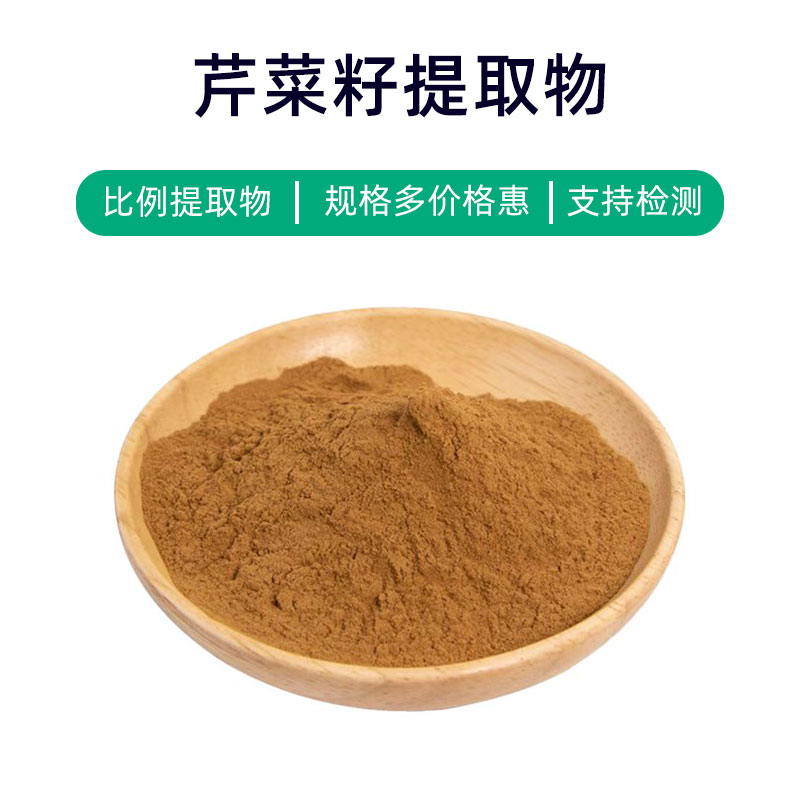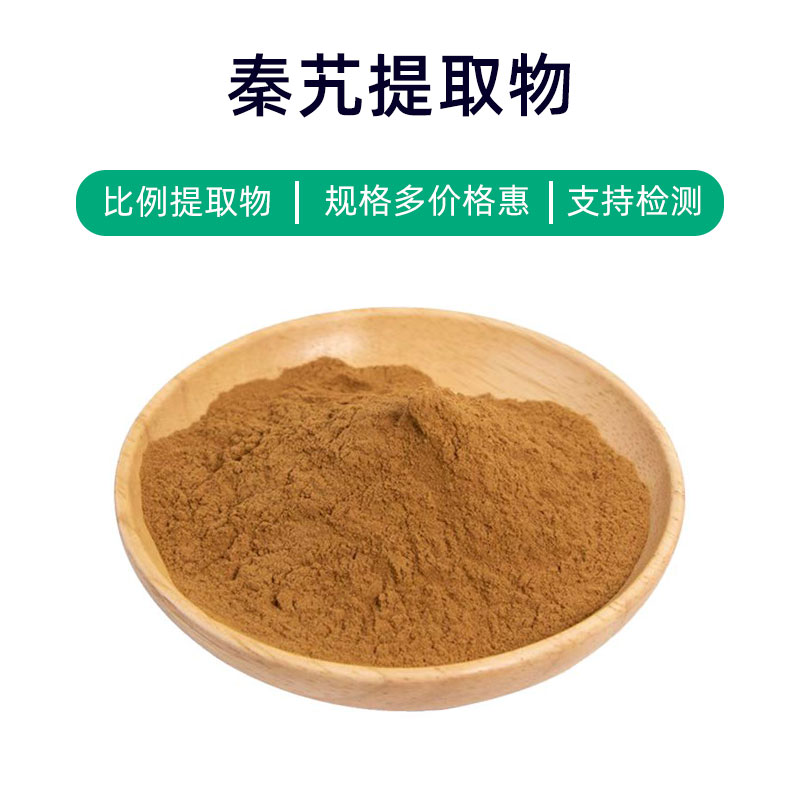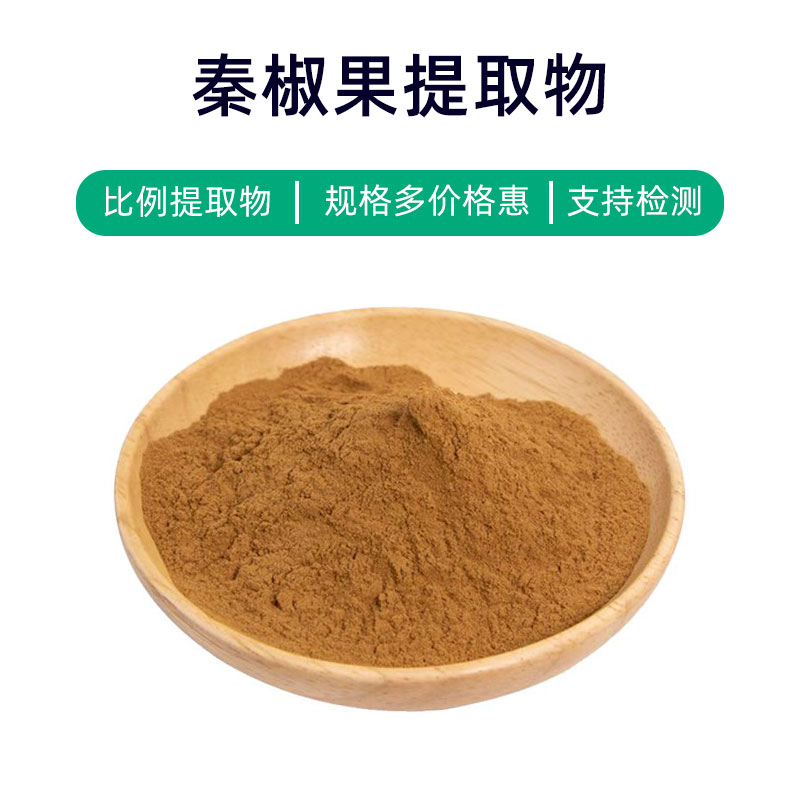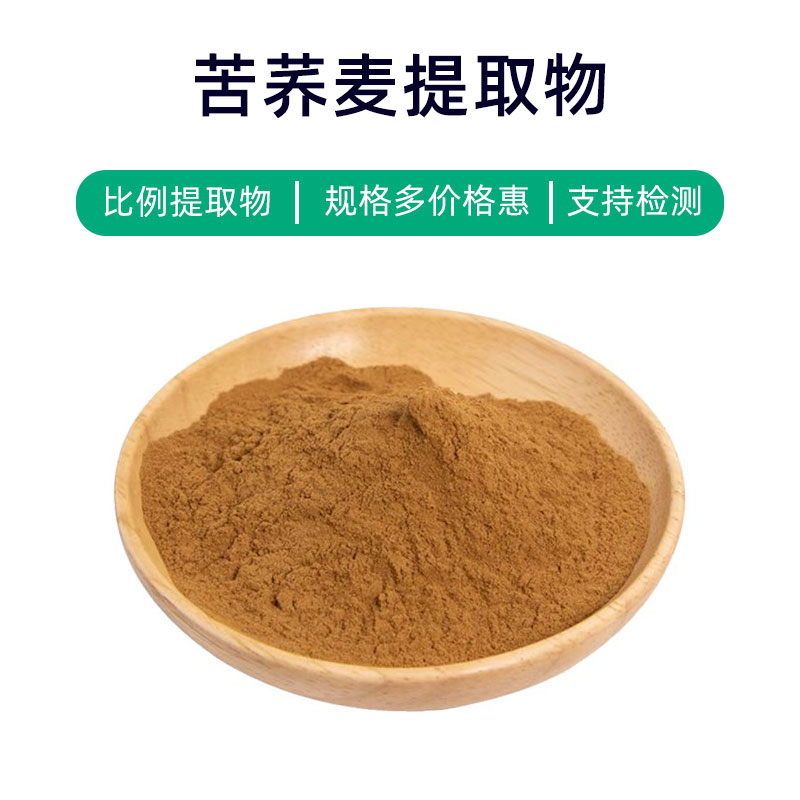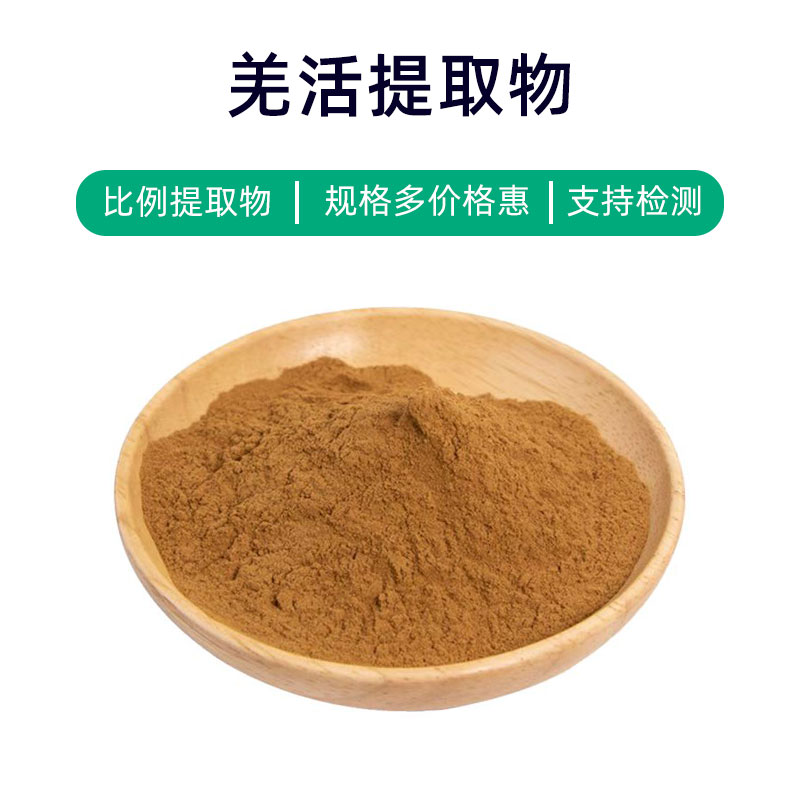Qianhu Extract Product Introduction
Qianhu Extract is a natural medicinal material extracted from the root of the Qianhu plant (Peucedanum praeruptorum). Its primary components include Peucedanin, Cnidilin, and Umbelliferone. In traditional Chinese medicine, Qianhu Extract is widely used for its cooling and phlegm-relieving properties and is commonly utilized to treat respiratory conditions such as coughs, asthma, and bronchitis. Additionally, it is employed in the food and health supplement sectors to enhance immune function and regulate body balance. Due to its natural origin and beneficial medicinal value, Qianhu Extract has attracted significant attention and is extensively applied across various fields.
Qianhu Extract Production Process
The production process for Qianhu Extract typically includes the following steps:
- Raw Material Collection and Preparation: Select high-quality Qianhu roots, wash, dry, and crush them for subsequent extraction.
- Extraction Process: Utilize appropriate extraction methods such as water extraction, ethanol extraction, or supercritical fluid extraction to obtain the active components from the Qianhu roots.
- Concentration: Concentrate the extract, often through vacuum concentration or membrane concentration methods, to eliminate most of the solvent and obtain a concentrated solution.
- Precipitation and Separation: Add suitable solvents or conduct proper treatments to precipitate or separate the target components from the concentrated solution.
- Drying: Dry the resulting extract to remove residual solvents and moisture, yielding a dry extract.
- Crushing and Sieving: Crush and sieve the dried extract to achieve the desired particle size, typically 80-100 mesh.
- Quality Control: Conduct quality testing of the extract, including assessing active ingredient content and checking for heavy metals and pesticide residues to ensure compliance with standards.
- Packaging and Storage: Package the extract in commonly used materials such as aluminum foil bags or plastic containers, seal it, and label it with production dates and batch numbers. Store it in a cool, dry place, avoiding direct sunlight and high temperatures.
The above outlines the general production process for Qianhu Extract, although specific operational steps and conditions may vary slightly among different manufacturers.
Qianhu Extract Effects and Side Effects
As a natural herbal extract, Qianhu Extract possesses multiple effects and functions recognized in both traditional Chinese medicine and modern pharmacology. Here are its main benefits:
- Anti-inflammatory Properties: Contains various active components that exhibit anti-inflammatory effects, useful for treating symptoms related to infectious diseases and inflammation, such as fever, swelling, and pain.
- Antioxidant Properties: Compounds in Qianhu Extract have antioxidant activity that can scavenge free radicals, delay cellular aging, and protect cells from oxidative damage.
- Anti-allergic Effects: Some ingredients in Qianhu Extract have anti-allergen properties that can alleviate symptoms of allergic reactions, such as sneezing, nasal congestion, and runny nose.
- Immune Modulation: Qianhu Extract helps regulate immune system functions, enhancing resistance and increasing immune cell activity, beneficial in preventing and treating immune-related diseases.
- Liver Protection: Offers protective effects on the liver, promoting liver cell regeneration and reducing liver damage, aiding in the treatment of hepatitis and fatty liver disease.
- Anti-spasmodic Effects: Certain components of Qianhu Extract possess antispasmodic properties, helping relieve symptoms caused by smooth muscle spasms in the intestines and airways.
- Anti-tumor Properties: Studies indicate that some compounds in Qianhu Extract exhibit inhibitory effects on certain tumors, helping to suppress cancer cell proliferation and metastasis, potentially assisting in cancer treatment.
- Anti-depressant Effects: Some ingredients in Qianhu Extract may improve mood and alleviate anxiety and depression symptoms, contributing to better mental health.
While Qianhu Extract has various benefits, it's essential to be aware of potential side effects and contraindications, and to use it under medical guidance. Individual differences and drug interactions should also be considered.
Qianhu Extract Application Scenarios and Dosage
Qianhu Extract has various applications in the pharmaceutical, food, and cosmetics industries, with dosage and methods differing depending on the field and specific situation. Here are its applications and corresponding dosages in different areas:
- Pharmaceutical Field:
- Usage: Widely used in traditional Chinese medicines, health supplements, and medical devices for treating respiratory, digestive, and immune system diseases.
- Dosage: Typically taken orally or applied externally. Oral forms include tablets and granules, with an adult dosage generally ranging from 3-9 grams per use, 2-3 times a day; pediatric doses should be reduced accordingly. External forms include ointments and patches to be used based on specific conditions.
- Food Industry:
- Usage: Acts as a health food additive to boost immunity and regulate intestinal function.
- Dosage: In food processing, used as a natural additive, with amounts regulated according to national food safety standards and product formulation requirements, adjusted based on specific product needs.
- Cosmetics Industry:
- Usage: Commonly included in skincare and hair care products for its antioxidant, anti-inflammatory, and skin-soothing properties.
- Dosage: Typically added at lower concentrations according to product formulation. For skincare, use a suitable amount, applying it to clean skin and gently massaging until fully absorbed.
- Precautions:
- Follow medical advice or product instructions when using Qianhu Extract products; be aware of adverse reactions and contraindications.
- Pregnant or breastfeeding women, children, the elderly, and individuals with chronic diseases should use it under a doctor's supervision.
- For oral forms, take after meals or during meals, avoiding intake on an empty stomach to reduce gastrointestinal irritation.
Overall, Qianhu Extract has broad application prospects in pharmaceuticals, food, and cosmetics, but care should be taken when selecting suitable products and dosage forms, strictly adhering to usage instructions and medical advice.
Qianhu Plant Source Introduction, Distribution, and Growth Environment
Qianhu (Scientific name: Peucedanum praeruptorum), also known as False Qianhu or White Peony, is a perennial herbaceous plant that belongs to the Umbelliferae family and is commonly used in traditional Chinese medicine. Below are details about the source plant of Qianhu Extract, its distribution, and growth environment:
- Plant Description:
- Qianhu is a perennial herb with thick roots and a branched structure. The upright stem can reach up to 1 meter in height, cylindrical with slight longitudinal ridges. The leaves are lobed into triangular-lanceolate shapes with irregular serrated edges, deeply divided.
- The flowering period is generally from June to July, with compound umbel inflorescences featuring small white flowers. The fruit is an oval-shaped achene with lateral ribs.
- Distribution:
- Qianhu is native to China, mainly distributed in Shaanxi, Shanxi, Henan, Hebei, Inner Mongolia, and Gansu provinces. It is also found in small quantities in South Korea and Japan.
- Growth Environment:
- Grows in mountainous areas, meadows, slopes, and fields at elevations below 2000 meters, preferring sunny, well-drained, fertile soil.
- While it is not overly demanding on soil, sandy loam is ideal, and it does not tolerate waterlogging.
- Growth Characteristics:
- Qianhu is adaptable and cold-resistant, capable of thriving in less optimal conditions but prefers a temperate, cool, and moist climate.
- Requires ample sunlight during its growth period to support photosynthesis and nutrient accumulation, promoting healthy plant development.
- Cultivation Methods:
- Qianhu can be propagated by seeds or division. Seeds are sown in spring, with a seeding amount of 10-15 grams per square meter, lightly covered with soil about 0.5-1 cm deep, and should germinate in 10-15 days.
- Division propagation involves choosing healthy parent plants and dividing them in spring or autumn to transplant into pre-prepared soil.
In summary, Qianhu is a resilient, cold-resistant perennial herbaceous plant primarily distributed in China and surrounding areas, thriving in sunny, well-drained environments. Given suitable growth conditions, Qianhu flourishes, providing ample raw materials for subsequent extract production.
Qianhu Extract Processing and Storage
The processing and storage of Qianhu Extract are crucial steps in ensuring product quality and maintaining the stability of active ingredients.
The processing procedure includes the following steps:
- Harvesting: Select well-growing Qianhu plants for harvesting, usually done after the plants have matured to assure high-quality medicinal materials.
- Washing: Clean the harvested Qianhu plants to remove surface dirt and impurities.
- Drying: The washed Qianhu plants undergo drying, generally using ventilated drying or low-temperature drying methods to preserve active compounds.
Storage Considerations:
- Dry Storage: Qianhu Extract should be stored in a cool, dry, and well-ventilated area, avoiding direct sunlight and damp conditions to prevent mold and quality degradation.
- Sealed Packaging: The extract should be placed in sealed containers to prevent moisture, oxidation, and contamination, thereby extending its shelf life.
- Avoid High Temperatures: Keep the extract away from heat sources and sunlight to prevent degradation of active components and changes in quality.
- Regular Inspection: Periodically check the quality and appearance of the extract, addressing or replacing any that show abnormalities promptly.
Through stringent processing and storage measures, the quality and stability of Qianhu Extract can be assured, providing a reliable foundation for its subsequent applications.
Monica Sun is a seasoned expert in the plant extraction industry with over a decade of experience in research and production. She specializes in the extraction and purification of plant active ingredients, focusing on driving innovation in natural product applications. Monica has participated in the development of multiple functional plant extracts, delivering high-value natural raw material solutions for the health food, pharmaceutical, and dietary supplement sectors.









